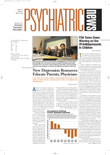Computer technology has become an increasingly vital part of psychiatric practice today. It seems there are new software programs and computer equipment reviewed in the Wall Street Journal each week. Trying to keep up and make sense of what technology you need may appear to be an exercise in futility—or perhaps the Health Information Portability and Accountability Act has left you thinking that paper and pen is good enough.
The goal of this column is to make these new technologies less daunting by explaining the basics and exploring the latest innovations. You may have heard of the term “medical informatics.” Dr. Edward H. Shortliffe, director of medical informatics at Columbia University, defines it as“ the scientific field that deals with biomedical information, data, and knowledge—their storage, retrieval, and optimal use for problem solving and decision making.”
Before you begin to think that it's time to go back for that master's degree in medical informatics or even contemplate giving up on using technology, there is an alternative. The American Association for Technology in Psychiatry (AATP, formerly known as the Psychiatric Society for Informatics) is a nonprofit membership organization of physicians and mental health professionals dedicated to the development and use of information technology to improve the quality and availability of psychiatric and mental health care. I am currently president of the AATP.
Most AATP members are also APA members. There is no degree or fellowship requirement to join—only a desire to expand your knowledge base and appreciation for what technology offers psychiatric practice. This column will be written by AATP members to help you understand and enhance your use of information technology.
Let's start with a very basic but pervasive use of technology: e-mail. E-mail has become the de facto alternative to voice-mail as a method to communicate and exchange information. Here are a few key concepts to understand about e-mail and a few tips to get your e-mail on the road.
E-mail accounts, whether set up at home or at work, have several key elements. You should know your account name, password, e-mail server name, and what type of protocol (method) your server uses to retrieve e-mail.
There are three types of e-mail protocols: POP (post office protocol), IMAP (Internet message access protocol), and SMTP (simple mail transfer protocol). SMTP is used to send e-mail from the server, whereas POP and IMAP are used to retrieve e-mail.
Both POP and IMAP follow the client-server model. That means that your e-mail is sent to your e-mail server (a computer connected to the Internet) and held there by the server until you connect with your client program on your computer, such as Eudora or Microsoft Outlook. In POP e-mail retrieval, all of your e-mail is then sent from the server to your computer. With IMAP, you have the option to download selected e-mail messages.
E-mail can be accessed from computers other than your own. One simple method is to use a Web browser that permits you to utilize any computer connected to the Internet, hence the term “Web mail.” Many Internet service providers (ISPs) offer a Web-mail service to their subscribers. For example, if Comcast is your ISP, you'd begin by typing in your browser the URL<
http://www.comcast.net>. Then you would sign in by entering your e-mail address and password; your e-mail then appears in the Web browser. One issue to keep in mind is that you can access only those messages still on the server; any e-mail you have already downloaded onto your home or office computer will not be available to you.
If your ISP doesn't provide Web mail, you can utilize a free service at<
http://www.mail2web.com> or a paid service at<
http://www.mollymail.com>. All you have to enter into the Web site is your e-mail address and password. These sites try to guess the name of your e-mail server and its method for e-mail retrieval. If mail2web cannot guess, you can try the advanced log in, which requires the e-mail server name. While mail2web adds two lines in your sent e-mail messages advertising its free service, the ad is not very intrusive.
It might seem simpler to use only Web-based e-mail services, such as Yahoo or Onebox. Such services are available from any computer connected to the Internet. There are free and paid accounts, which offer different features.
Free accounts typically require you to log in and check e-mail at least once a week; otherwise, your account will be deactivated. The providers want you to check your e-mail often because it will be seen with random ads along the side. Paid accounts, which range in cost, do not have advertisements, and they come with more features, such as extra storage space, virus scanning, fewer restrictions on attachment size, and spam blocking.
A major disadvantage with Web-based e-mail-only accounts is that your computer must be connected to the Internet to access your e-mail.
If you are exceeding your e-mail size capacity on the server, you must delete messages or attempt to save them on your computer. To save messages is an unwieldy process. The simplest way is to print the message, but to keep the contents digital, you can copy the message and save it in a document such as Microsoft Word or text file. ▪
